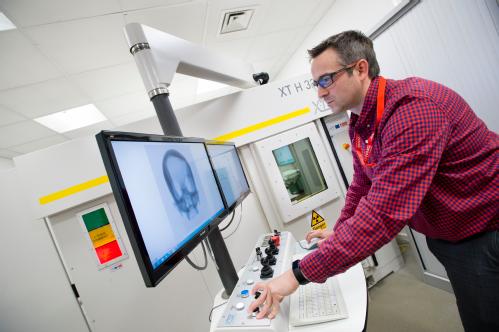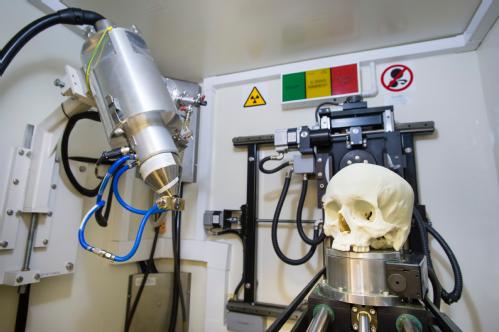Forensics is 3D


The way ahead for forensics is 3D.

Professor Mark Williams, WMG, Warwick

Forensic science has been the cornerstone of the justice system since fingerprinting was first introduced to criminal investigations in the 19th century.
However, today the processes and techniques used are complex, powerful, unique, and even more effective. Our research at the University of Warwick into this field has made a significant contribution to the progression of forensic science and I am extremely proud of what we have achieved.
Yet, my journey into forensic investigation and criminology was not a natural progression. You could say it was one phone call, one day, that changed my life.
Aware of my background in image processing and 3D technologies, in 2014 I was contacted by the West Midlands Police to see whether we were able to help with an ongoing case. Like many people, I was interested in criminal investigations and had watched many television programmes about police and crime, although I had never previously considered it as a research or career path. Nevertheless, I accepted the challenge, and here started my journey into forensics.
Alongside my colleagues, we applied our novel 3D technologies, including micro-CT and 3D printing, to the forensic investigation of a suitcase found in a canal in the West Midlands, containing a dismembered human body.
Applying high-resolution 3D scans of burnt human bone we were able to help provide a crucial link between the site where the body had been disposed of and the home of the murder suspect – leading in part to a murder conviction.
This was over 8 years ago, and since this point we have made a significant contribution to 25 police forces throughout the country and other key institutions in the UK, including several security organisations.
Using advanced forensic imaging technology, we have made a major contribution towards the improved quality of evidence in homicide investigations.
Our novel image processing methods and 3D visualisation techniques have provided police investigators with a powerful new tool for uncovering and evidencing crime. The involvement of non-invasive scanning technology adds significant value to forensic analysis at the front end of investigations before complementary destructive processes are deployed.
These techniques have not only enabled police forces to solve complex crimes, but also assisted the Crown Prosecution Service (CPS) in their evidence reviews and presentation of cases.
Since this first landmark case, we have supported over 250 murder cases and made a vital contribution to securing criminal convictions, ensuring victims of crime and their families receive the justice they deserve.
Our impact has constantly been underpinned by quality, industry-leading academic research that is paving the way for the future. From studies to validate findings, to case study papers and conferences presenting our technology, research, and outcomes, we have not only made a real-world difference, but furthered the field of forensic science.

When I reflect on our progress, I always think of those who have helped me and my colleagues throughout this incredible journey. The University of Warwick has championed our research through the provision of state-of-the-art equipment and put their full trust in us to explore different options and avenues.
Alongside the university I must give credit to those organisations we support, who have been eager to help in any way they can and retain the same vision and ambition we do. To accelerate and facilitate wider uptake of this technology, the Forensic Centre for Digital Scanning and 3D Printing, a research partnership between West Midlands Police and Warwick, was established in 2019.
Through the Centre, over £500,000 in savings have been achieved with more than 140 specialist practitioners receiving continuous professional development training on image processing methods and 3D visualisation techniques.
As a I look to the future, I feel we are at a crossroads. The field is constantly evolving, and it is our responsibility to continue to build on our achievements, rather than rest on our laurels. It is our ambition for even more police forces and organisations to be able to utilise our technology. However, it is down to us to continue to validate our research and work and demonstrate why this is so important.
One thing is for certain, our work at the University of Warwick will play an active role in the criminal justice system for years to come.
Related article
wmg
